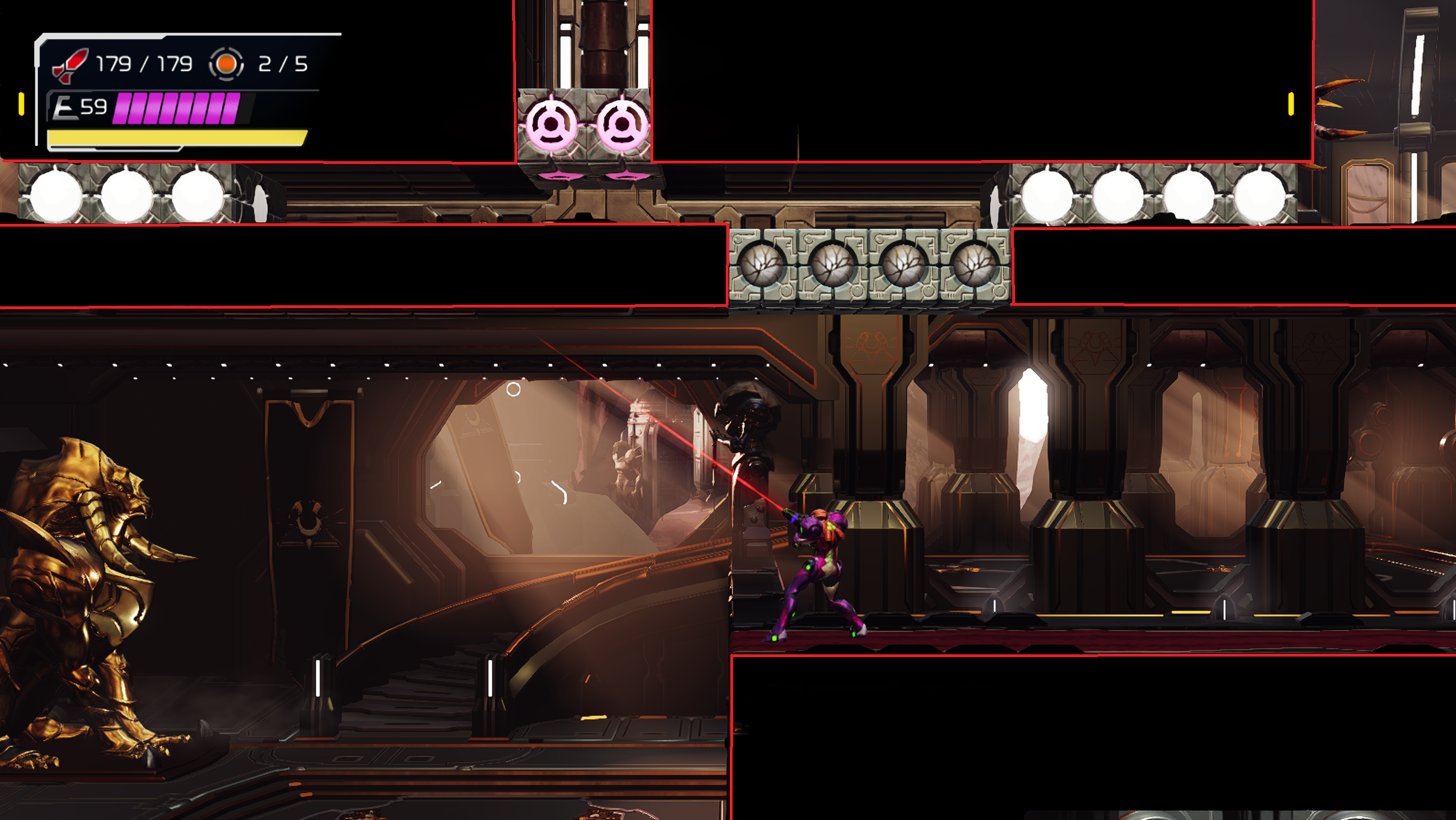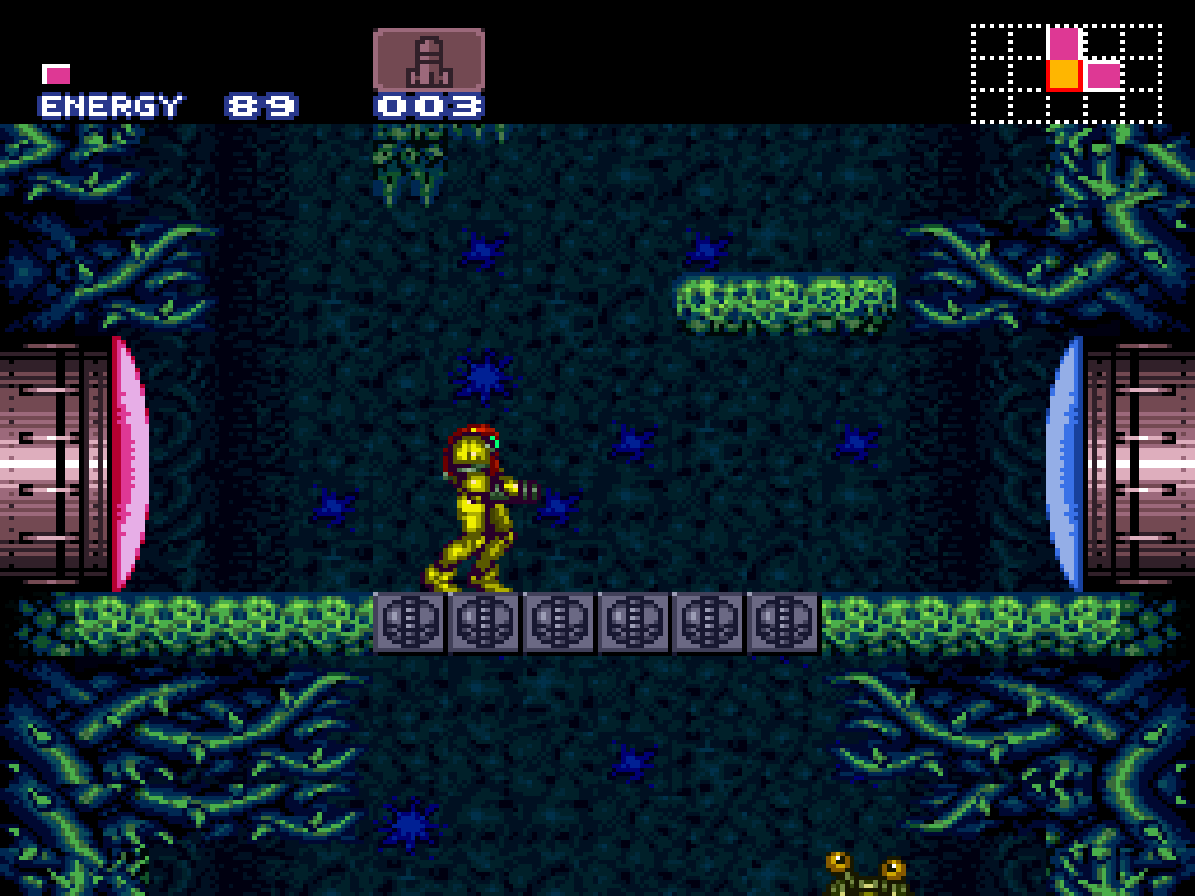Forgot what made me think about this topic but I’ve been considering this for a week or two… Curious what you all think.
When I mean “hardest” “video game”, I mean whatever game that you find objectively more difficult than all other ones on the market, as long as it’s a video game. I guess exposure to different genres/types of games can influence the answer to this question a lot so… Hence I was curious about your rationale.
I have a pretty solid answer & rationale but I guess I shouldn’t share that in the main post to bias results…
I always put the original Blaster Master on the NES up there.
It had no save capability at all, nor any codes to stop & restart later. When you sit down, you better be ready to do the whole 4+ hours in one playthrough (or just leave the NES on & walk away).
But the kicker was that once you got hit just a few times, you might as well restart. The gun (in person mode) would power down with each hit, and after a few hits, well, you just didn’t have enough ‘oomph’ to kill the bosses. But the power-ups to get the gun were fairly sparse in the first place, so once you got hit, it wasn’t like you could just retrace your steps & power up again.
Mildly interesting, at least to me, I understand it’s been remastered for the Switch. It now has save points AND being hit doesn’t reduce your gun’s power. That would make it a completely different game. I’m be curious to check it out someday. If nothing else, I’m curious to see how much of it I remember. I suspect I can autopilot the first 2 hours, despite it being 40(?) years later.
This is one is genre specific, but Caesar 3. I love city builders and have played them for as long as they’ve existed. I’ve learned all the little tricks and systems of the ones I’ve played, exploiting esoteric mechanics and optimizing my little utopias and creating epic, sprawling empires that far exceed every metric asked of me. That said, Caesar 3 is a challenge I still relish after (oh wow, has it really been) 25 years. It’s the only city builder where the “peaceful” branch in the story is harder than the “wartime” scenarios. I revisited it recently wondering if I was just missing something back when I was younger, but nope. On the harder levels it asks you to sustain larger and larger populations with increasingly limited resources, and reaching the level of getting patrician housing (only achieved with sustained, stable access to literally every amenity) is extremely difficult but oh so satisfying. Every other city builder I’ve played, I barely have to think about every house becoming the top tier, but in Caesar 3 it’s impressive if even a single block achieves it. It stands out even now after so many new entrants into the genre. Hell, it’s still worth playing haha.
There is one game, one level, that was so hard to beat that I just gave up and walked away, never to return. The stampede on Lion King from the SNES.
A lot of games from that era were epically hard; few games had a difficulty setting, a lot of tie-ins meant games looked and played polished but no effort was given to make a solid game, computing power meant there was usually only one way to complete a mission or level. However this was a game made for kids and that fucking game, that fucking level was simply bullshit.
Celeste is a truly difficult 2D platformer. VVVVVV follows behind. Metroid Dread is a cruel one.
F-ZERO X and GX are both racers with incredibly high skill ceilings. Which one is harder depends on what you’re doing with the game. I’d argue GX has harder base gameplay, but X has harder speedruns.
I’ll also mention Final Fantasy IV because it’s shockingly difficult compared to the rest of the series. This one gave me a more game over screens than any of the others.
Metroid Dread still kinda … bothers me. At the risk of sounding overly contentious, am I the only one who thought it was like a 7/10 action game and a 5/10 Metroidvania?
I won’t go into it all now, but I feel like the difficulty spike is a knock-on from the lack of collectibles. While you can argue about the usefulness of previous collectibles in Metroid games, in Dread they’ve been pared down to Missile Tanks, Energy Tanks, and Power Bomb Tanks. To make discovering those limited things more valuable, they pumped up boss difficulty so you’d either have to come in with a sufficiently high stockpile or perform a counter.
I’m not sure if that’s 100% accurate and I may be generalizing my own experiences too much, but otherwise there’s just not really enough excuse for me to go out of my way and collect all those Missile Tanks unless I’m specifically going for a completionist run. Seeing yet another +5 Missile Tank tucked away somewhere just doesn’t make me go, “Wow, I need to get there!” but increasing the boss difficulty to a point that requires it also makes it feel less optional? Anyone agree?
certified Dread disdainer
I agree & I’m old enough to have played all the Metroid games when they were released.
The biggest problem with Dread is there’s a million games that have released since the last 2D Metroid that have done so much more with the genre that the name isn’t pulling it’s weight like it once did, and they forgot to innovate.
They tried to recapture the “oh shit” feeling of encountering X from Fusion in Dread, but the quick-time instakill events just made it tedious and annoying.
The GBA/DS Castlevania games are all 8/10+ if you’re a fan of metroidvanias and a collection recently released on Steam/Switch. They all take the same formula and change things to make it feel familiar, but different, and give you plenty of things to go back for after you’re “done”.
Finishing Dread became a chore about 2/3 through, it just stops being fun.
I’m waiting incredibly impatiently for Hollow Knight: Silksong, as Hollow Knight is pretty much the game all Metroidvanias is compared to at this point and it is top notch.
Same on all accounts. Got the original NES Metroid for my birthday when I was a kid and impacted my taste in games forevermore. Of course I’ve played all the Castlevanias as well and Hollow Knight is a masterpiece.
It’s hard to properly compare because I’ve played Super Metroid more times than I honestly remember and have only made it through Dread 1.5x (at best). There are so many cool rooms in Super (and even later games like the Prime series) where I play them and go, “Oh, this is the room with X!” where X is a cool encounter, maybe a friendly/non-hostile creature, or an entertaining set piece. Dread doesn’t really have that, the areas check off zones like flavors of ice cream, the music is not memorable, and creatures are often used across multiple zones, further diluting any uniqueness to the areas.
It’s best summed up by this screenshot I took of Dread (I added the red outlines around the black space myself to highlight my point). Notice how the foreground has no character or texture and all the detail has been pushed into the background, which is essentially the negative space you traverse through. My eyes don’t really hold on this area, they capture the boundary of the play space and then navigate through it, passing over a lot of the inconsequential stuff in the background. Again, compare to Super.


Also the EMMI stealth sections are so incongruous with the rest of the game you could cleanly slice them out entirely (while redistributing any of the power ups of course) and the game would be the same. In fact I rather hate them because instead of taking my time to explore and soak in the environment, I’m just chased through a very samey looking area.
Oh and finally, it’s a small point and I don’t want to make too much out of it, but like … the game opens with SPOILERS beating her so hard she loses her abilities. That’s weird, right? Kinda oof, IMHO.
I don’t know how many times while playing Dread I said to myself “wow, that XXXX in the background looks cool, wish I could go there…”
Out of the games I’ve played, OSU. I am pretty average at rhythm games where it’s like Project Sekai or the Miku Diva style games where all you have to do it wait and click a button or tap somewhere specific at a fixed location on screen, but I absolutely suck at the whole move the mouse and click thing. Just as bad with mouse as when I tried with my beginners tablet.
Most other games I play anymore are games I know I’m at least decent at, so I don’t have many games I’d consider the hardest or even to compare those too. Though, while writing this and thinking about it, I’d say I might compare OSU to Vib-Ribbon in general, default songs or not, and possibly even give it a close second for difficulty. And that’s despite it being more of a wait and click type rhythm game in my eyes.
I’ve actually been waiting for anyone to mention any rhythm games at all. I think rhythm games in general tend to have low skill floor, but insanely high skill ceilings (Freedom Dive, some Hatsune Miku songs, …), which make them an interesting case on the difficulty scale… Some rhythm games have unintuitive control too (OSU being a prime example with the mouse control, also Taiko series) which makes them even more difficult
Side note: I find it hilarious that the original game which OSU was based on was actually just a “tap a tablet” game though (Ouendan series, use stylus to click bottom screen of NDS)… also some JP arcades stock Reflec Beat and crossbeats Rev, Round1 has an exclusive game Tetote Connect, which are all “tap a button on the screen” games but you touch the screen with your hands instead
I agree, even the hardest non-rhythm games I seem to be able to get accustomed to in 50~100 hours, but not some of these monstrosities
Battletoads
Old games were brutal.
Jet set willie comes to mind.
Faster Than Light.
Seriously you could play ten games a day for a year and not even come close to winning, even if you’re quite good at it.
Try DCSS.
There are so many kinds of difficulty that this is hard to answer.
There’s fake difficulty, where the game is just being cheap. Some games are hard because their mechanics or controls are just janky.
Some games are easy to lock yourself out of the ending and not know it. Try the game from the start again!
There’s genuinely difficult games, but any time a game is difficult in a “fair” sense, there are people on the internet who’ll beat it with a guitar controller, or blindfolded, or without any power ups.
If you want a game that not many people could beat…I don’t think many people could beat Bokosuka Wars today…
Precisely. There are games where random factors like a particular loot drop, or doing well in an early battle thanks to random critical hits, or a good randomly generated starting point all determine if the game is reasonably beatable, or if you end up softlocked.
There are other games with certain, let’s says pranks, played on players with one hit kills that can only be avoided with foreknowledge. In modern games, at least these pranks are made shortly alter save points or there is a Dark Souls like way to regain equipment/progress. In a lot of older games, the player is forced to restart a big chunk of the game. At that point it becomes a test of patience rather than skill to replay the same level over and over.
Then there’s games like the original “pirates!”. It has an anti cheat that would present itself as a simple question like “do you recognize whose pirate flag that is”. The answer is in the booklet, and if you answer wrong nothing visible happens but the difficulty is cranked so high that the game becomes effectively unbeatable.
Nina Gaiden 2. Bayou Billy.
The classic arcade game Venture. Go ahead, make my day:
https://archive.org/details/arcade_venture#
Venture is a 1981 arcade game by Exidy. The goal of Venture is to collect treasure from a dungeon. The player, named Winky, is equipped with a bow and arrow and explores a dungeon with rooms and hallways. The hallways are patrolled by large, tentacled monsters (the “Hallmonsters”, according to Exidy) who cannot be injured, killed, or stopped in any way. Once in a room, the player may kill monsters, avoid traps and gather treasures. If they stay in any room too long, a Hallmonster will enter the room, chase and kill them. In this way, the Hallmonsters serve the same role as “Evil Otto” in the arcade game Berzerk. The more quickly the player finishes each level, the higher their score. The goal of each room is only to steal the room’s treasure. In most rooms, it is possible (though difficult) to steal the treasure without defeating the monsters within. Some rooms have traps that are only sprung when the player picks up the treasure. For instance, in “The Two-Headed Room”, two 2-headed ettins appears the moment the player picks up the prize. Players die if they touch a monster or the corpse of a monster. Dead monsters decay over time and their corpses may block room exits, delaying the player and possibly allowing the Hallmonster to enter. Shooting a corpse causes it to regress back to its initial death phase. The monsters themselves move in specific patterns but may deviate to chase the player, and the game’s AI allows them to dodge the player’s shots with varying degrees of “intelligence” (for example, the snakes of “The Serpent Room” are relatively slow to dodge arrows, the trolls of “The Troll Room” are quite adept at evasion). The game consists of three different dungeon levels with different rooms. After clearing all the rooms in a level the player advances to the next. After three levels the room pattern and monsters repeat, but at a higher speed and a different set of treasures.
\Released
1981This is a roguelike for people who find Nethack too easy. Then you have the option of layering in challenges like blind, pacifist, and vegan. Go ahead, try playing through as a blind, vegan, pacifist Tourist. I dare ya.
A lot of games made in the 90’s were difficult. But that’s before entitlement struck the gaming community and the “I need to beat this game in a weekend” turds were dictating how games turned out.
Games made in the early 90’s were made for cartridges and floppy disks with limited memory and couldn’t contain a lot of content so difficulty was used to increase playtime.
Nice theory, but no. Just look at WoW as a perfect example. When it launched in the early 00’s, overland content had a bit of a difficulty curve to it. It was clearly intended to be somewhat challenging overall.
Other MMOs that followed had the same thing. ESO being a perfect example. In many places, and I recall it well- just doing side quests was risky. LoTRO is another good example.
Then over the years, the player base whined and the developers caved in to appease what was and still is called: “the care bears.”
The vocal majority of players that got tired of the grind and the difficulty, and whined their way into changing the overall feel of games to be winnable under the easiest of circumstances, and the last amount of time.
ESO is a soloable joke of a game and WoW is a cartoon. Now, difficult games are a niche novelty.
When an MMO launches it normally has little content and uses difficulty to pad playtime, especially subscription MMOs like WOW and pre-one tamriel ESO. Typically an mmo reduces difficulty of old content over time, when new content becomes available.
I do agree that the effect is much more pronounced the more popular a game is. LoTRO at least added some of the overworld challenge back with an optional difficulty slider after community backlash, and I’m not sure that a less niche game would have bothered.
With all due respect, I think that a load of excuse mongering. Everyone knows that casuals complain to developers all the time. And that they get their way because they threaten to quit/cancel their subs.
This isn’t a giant secret. It’s pretty well known in a ton of games.
it is a well known industry standard design philosophy.
“At the time, a console title cost something in the realm of $100 in today’s dollars (or over €85-95), which made each game purchase an investment requiring long consideration and thoughtful planning. At that price, every game needed to last weeks, if not months, to justify the investment. Most games achieved this with the good old “Nintendo-hard” philosophy: Brutal challenges make a relative dearth of original content last longer.”

Here’s one now!
Polybius I forget what I’m doing while playing.
Counter Strike, Starcraft, Dota, Tetris (yes, really), each at the highest competitive level - going by skill ceiling.
Edit: Modern Tetris at the highest level looks absolutely inhuman. I have seen Triple T-Spins at absurd speeds.
Edit 2: You are pretty much physically unable to compete in these games by age 30 at the highest level.
Starcraft esport scène is showing that you can compete past 30






